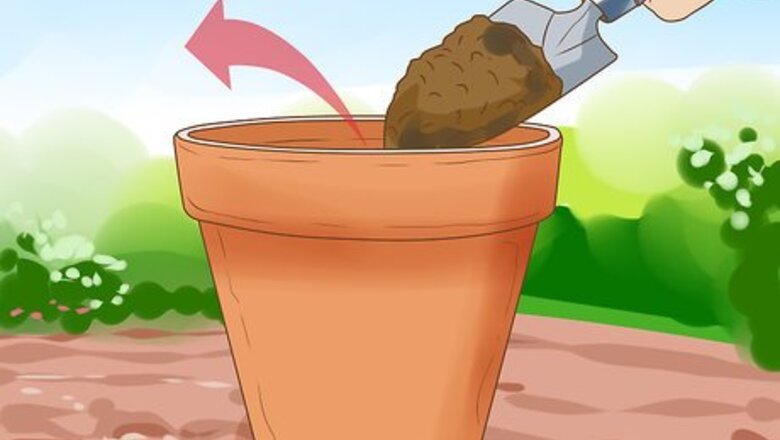
views
Removing Loose Dirt
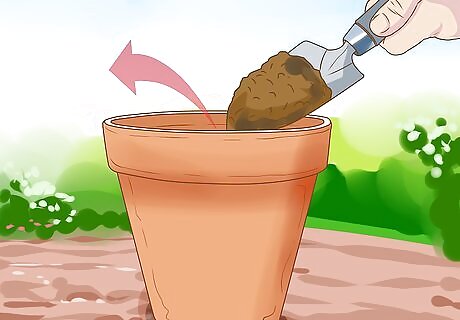
Empty your pots of all dirt and plants. Before you can clean the pot, it obviously needs to be empty. Dump out old plants and dirt. If you want to keep the plants in the pots, remove them gently and set them in an empty pot until the original pot is clean and dry.
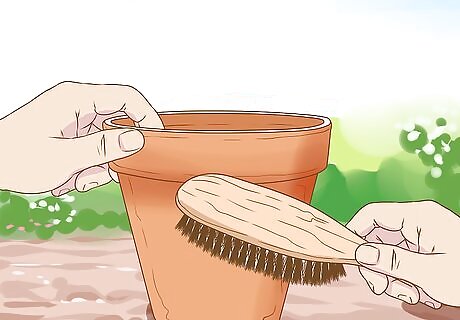
Brush away dirt. Once the pots are empty, brush away as much of the dirt as possible with your hands. Most of it should come away easily, but some of it may not.
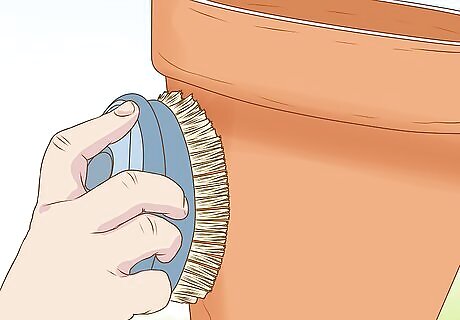
Scrub the pot with a brush. For stubborn dirt, use a stiff bristled brush. Brush gently back and forth across the surface of the pot. Don't use metal bristles on your clay pots - they can scratch the pot and leave white marks in the clay.
Soaking the Pot
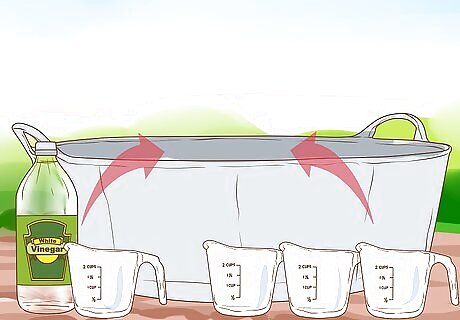
Mix a water and vinegar solution. Mix together a 1:3 ratio of white vinegar to water in a large tub or sink. For example, you’ll want to use 1 cup (8 ounces) of vinegar with 3 cups (24 ounces) of water. If you’re cleaning a lot of pots, simply double or triple these amounts. You can also use a bleach and water mixture. Mix together ¼ cup (2 ounces) of bleach and five gallons of water.
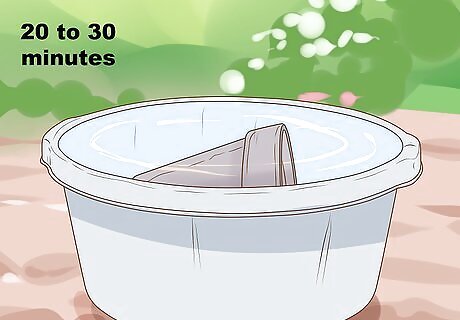
Let the pots soak for 20 to 30 minutes. Place your pots in the water and vinegar solution and let them soak for twenty to thirty minutes. The liquid should completely cover your tallest pot. You might see or hear bubbles in the solution. That’s okay – it just means that the pots are coming clean.
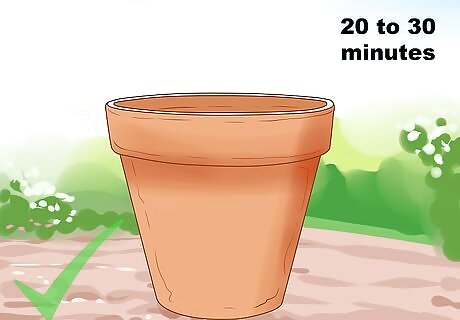
Check the pots. After 20 to 30 minutes, take the pots out of the liquid to check them. If they’re ready to come out, you should be able to easily remove any remaining residue with your hands or a brush. If you can’t easily remove the remaining residue, let the pots soak for 5 to 10 minutes longer.
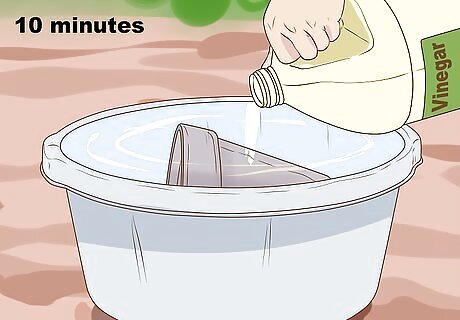
Soak really dirty rims in pure vinegar. The rims of clay pots tend to become very dirty. If you have extra dirty rims, flip them upside down and place them on plates or in a bowl with a layer of pure vinegar in them. Let them sit for about 10 minutes.
Removing Salt Marks
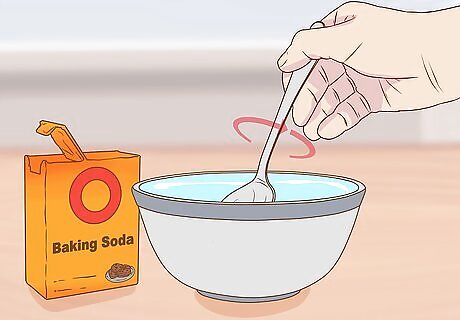
Make a baking soda paste. The amount of baking soda paste you need will vary depending on how many pots you’re cleaning and how extensive the salt stains are. But you should add just enough water to baking soda to give it the consistency of hand lotion.
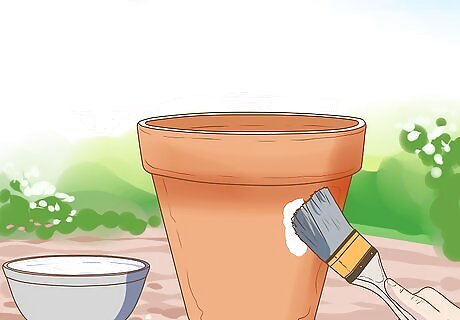
Spread over the salt build up. You should spread enough paste to cover the salt stains completely. It should be just thick enough to cover the stain.
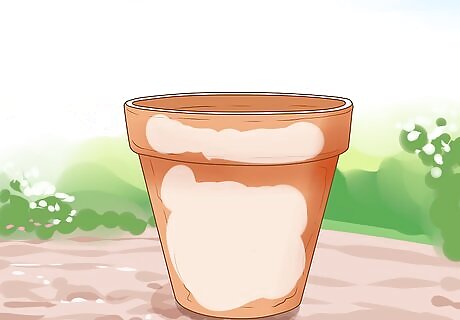
Let the paste sit for five to ten minutes. The paste will dry slightly as it sits – that’s okay.
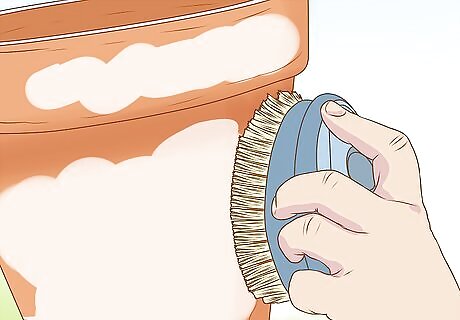
Scrub away the paste. After five to ten minutes, use your hands or a brush to scrub away the now-dry paste. You might need to rinse the pots to completely remove the paste, but once you do, the salt stain should be gone.
Disinfecting Your Pots
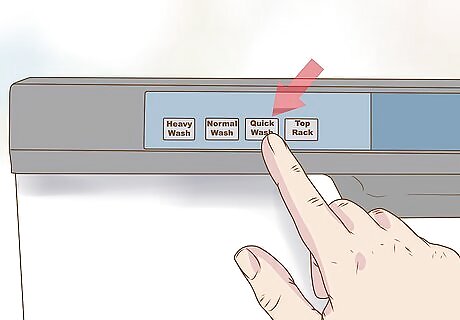
Set the dishwasher to quick-wash. Once you’ve soaked your pots, you’ll want to disinfect them. Set your dishwasher to its quickest wash setting, and add the amount of soap you would add for a small to medium load of dishes.
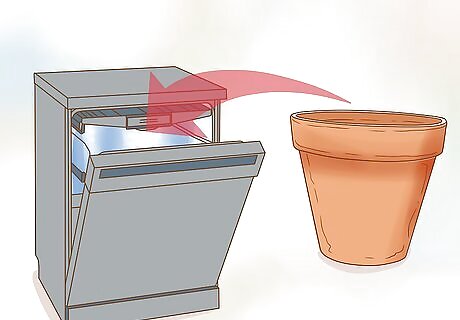
Run your pot through. Let your pots run through a full cycle in your dishwasher. The heat and the soap will disinfect your pots.
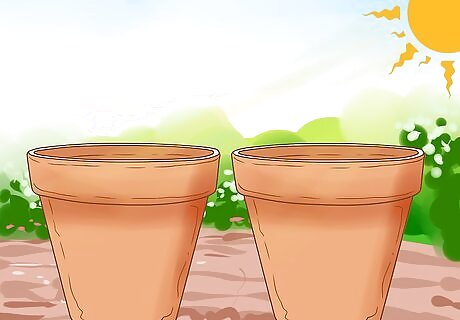
Let them dry. Once your pots are done in the dishwasher, leave them in the rack to dry completely. This can take up to a couple of hours. You can also speed the drying process by placing them outside on a sunny day.












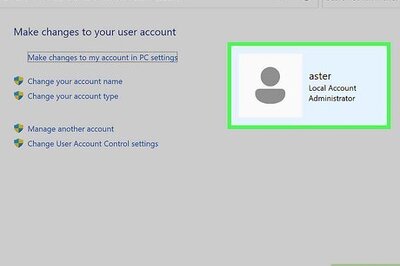

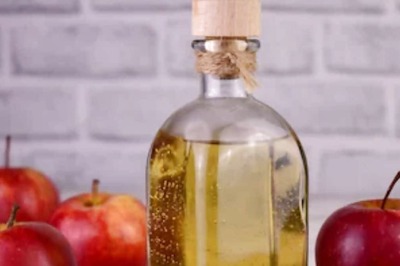




Comments
0 comment